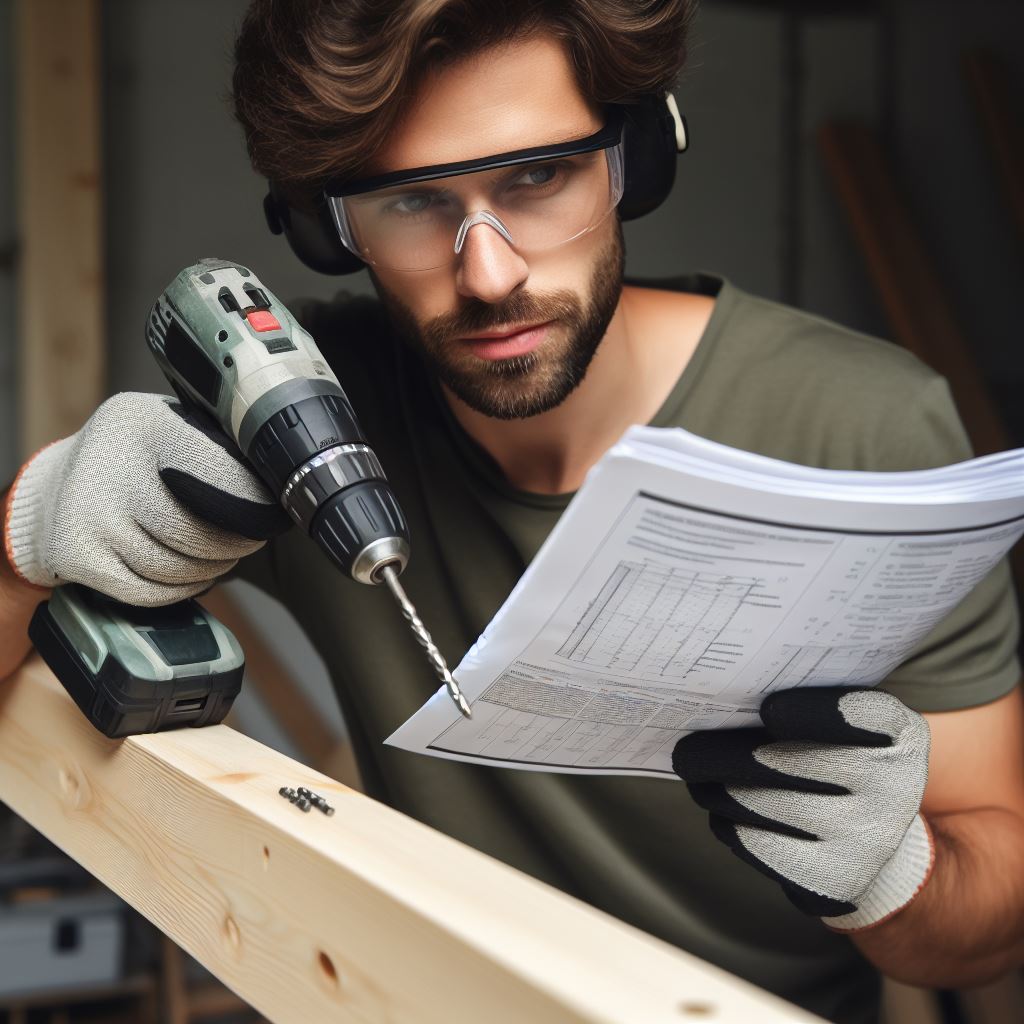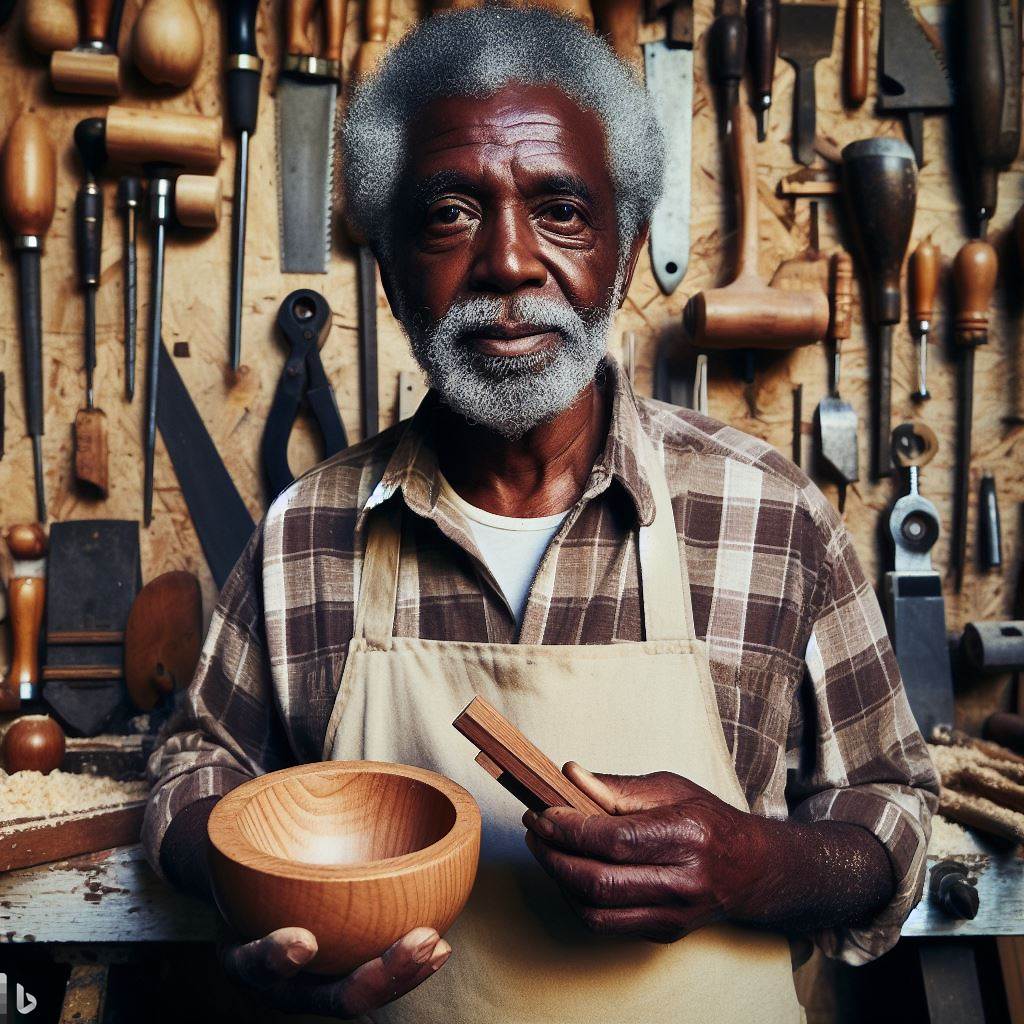Introduction
Brief description of the modern carpenter’s role in construction industry
The modern carpenter and carpenter toolkit plays a crucial role in the construction industry, using their skills to build and repair structures.
They craft and install wooden components, ensuring structural integrity and aesthetic appeal.
Carpenters collaborate with architects and contractors, measuring, cutting, and shaping materials with precision.
They also work with a variety of materials, including wood, steel, and concrete, contributing to the construction of diverse projects, from residential homes to commercial buildings.
In addition to traditional skills, modern carpenters often use digital technology for planning and project management, enhancing efficiency and accuracy in their work.
Their versatility and expertise are essential for successful construction projects.
Importance of having a toolkit to navigate challenges in the profession
Having a toolkit is essential for carpenters to overcome challenges and accomplish their tasks efficiently.
It empowers professionals to adapt, innovate, and excel in their roles.
This toolkit, comprised of skills, knowledge, and strategies, equips individuals to navigate challenges effectively.
It enables proactive problem-solving and fosters resilience.
A well-rounded toolkit includes communication, critical thinking, and adaptability skills, which enhance one’s competitiveness.
In the face of adversity, professionals can draw upon their toolkit to find creative solutions and seize opportunities.
Moreover, having a toolkit fosters continuous growth and development in a constantly changing professional landscape.
It also instills confidence, making professionals more self-reliant and better equipped to overcome obstacles.
Ultimately, possessing a versatile toolkit is not just an asset; it’s a necessity for thriving in any profession..
Essential Tools for the Modern Carpenter
Traditional hand tools
- Hammers, chisels, and screwdrivers are indispensable for any carpenter.
- Measuring tools such as tape measures, squares, and levels are essential for precision work.
Power tools
- A drill, circular saw, and jigsaw are versatile power tools that every carpenter should have.
- Power sanders and planers help in achieving a smooth finish on wood surfaces.
- Nail guns and staplers make fastening materials quick and efficient.
Advanced technology tools
- Laser levels and digital angle finders assist in achieving accurate measurements and angles.
- Mobile apps for project management and material estimation streamline carpentry tasks.
Carpenters utilize a toolkit blending traditional hand and modern power tools for enhanced efficiency and precision.
Traditional hand tools include hammers, chisels, and screwdrivers for nailing, shaping, and tightening. Measuring tools like tape measures, squares, and levels ensure precise measurements and flat surfaces.
Power tools, like drills, circular saws, and jigsaws, expedite carpentry with hole drilling, cutting, and smooth finishing.
Nail guns replace manual hammering, speeding up fastening.
Technology introduces laser levels, digital angle finders, and mobile apps for precise measurements, angles, project management, and material estimation.
Transform Your Career Today
Unlock a personalized career strategy that drives real results. Get tailored advice and a roadmap designed just for you.
Start NowProficiency and safety are vital for effective tool usage. Regular tool maintenance prolongs their lifespan and performance.
In sum, a contemporary carpenter’s toolkit incorporates traditional and power tools, aided by advanced technology and mobile apps.
Mastering these tools empowers carpenters to tackle challenges and deliver professional results.
Specialized Skills and Knowledge
Carpentry techniques
The first set of specialized skills a carpenter should have includes a strong understanding of various carpentry techniques.
- Framing and structural work: Carpenters should be adept at constructing frameworks and supporting structures for buildings.
- Finishing work like cabinetry and trim installation: Carpenters need expertise in the installation of cabinetry, molding, and other finishing touches that complete a project.
Understanding of construction materials
Another crucial aspect of a carpenter’s toolkit is a thorough understanding of different construction materials.
- Knowledge of different types of wood, their characteristics, and uses: Carpenters should be well-versed in the properties and applications of various wood species to ensure proper material selection and usage.
- Familiarity with various hardware, adhesives, and fasteners: Carpenters must know which hardware, adhesives, and fasteners to use for different materials and situations to ensure structural integrity.
Ability to read blueprints and technical drawings
Carpenters must possess the ability to interpret and understand blueprints and technical drawings.
Being able to visualize the end result and accurately follow plans is crucial for ensuring precision and successfully bringing designs to life.
Knowledge of building codes and regulations
Lastly, a modern carpenter must have a solid understanding of building codes and regulations to ensure compliance and safety in their projects.
They need to stay up-to-date with the latest regulations, permits, and inspection procedures to avoid any legal complications and ensure that their work meets industry standards.
Developing specialized skills and knowledge in these areas equips carpenters with the necessary toolkit to tackle challenges head-on and deliver high-quality craftsmanship.
Read: The Historical Evolution of Carpentry in the USA: A Deep Dive
Adaptation to Technological Advancements
Embracing new construction materials and methods
The modern carpenter needs to adapt to technological advancements in the construction industry.
Embracing new construction materials and methods is crucial to stay ahead in the field.
Sustainable and eco-friendly options
Carpenters should explore sustainable alternatives to traditional materials like wood.
Environmentally-friendly materials such as bamboo, recycled plastic, and engineered lumber can be used in construction projects.
Carpenters can also adopt eco-friendly construction methods, such as using low VOC (volatile organic compound) paints and finishes.
Installing energy-efficient windows, and incorporating renewable energy sources into their projects.
Prefabrication and modular construction
Carpenters should familiarize themselves with prefabrication and modular construction techniques.
These methods involve building components off-site according to precise specifications, which are then assembled on-site.
Prefabrication not only saves time but also ensures high-quality construction.
Transform Your Career Today
Unlock a personalized career strategy that drives real results. Get tailored advice and a roadmap designed just for you.
Start NowCarpenters who adapt to this method can efficiently work on multiple projects and increase their productivity.
Incorporating computer-aided design (CAD) software
Computer-aided design (CAD) software has revolutionized the carpentry industry.
Carpenters who incorporate CAD software into their workflow can experience numerous benefits.
Benefits of design visualization and accuracy
CAD software allows carpenters to create accurate 3D models of their designs, enabling them to visualize the final product before construction begins.
This helps in identifying any potential flaws or issues early on, saving time and resources.
Additionally, CAD software provides precise measurements and specifications, ensuring accurate construction.
Carpenters can produce detailed plans and layouts, reducing errors and rework.
Collaboration with architects and engineers
CAD software facilitates seamless collaboration between carpenters, architects, and engineers involved in a construction project.
Carpenters can share their designs electronically, allowing for real-time feedback and modification.
Efficient collaboration leads to better coordination and integration of different disciplines, resulting in a more successful and streamlined construction process.
Staying updated with industry trends through continuous learning
To adapt to technological advancements, carpenters should prioritize continuous learning and staying updated with industry trends.
Attending trade shows and workshops
Trade shows and workshops provide carpenters with opportunities to learn about the latest tools, equipment, materials, and techniques in the industry.
These events also offer networking prospects, allowing carpenters to connect with experts and peers.
Engaging with online carpentry communities and forums:
The internet provides carpenters with online communities and forums where they can connect with fellow professionals, ask questions, and share knowledge.
These platforms offer a wealth of information, tutorials, and discussions on various carpentry topics.
Carpenters who actively engage with online communities can keep up with industry trends, learn new skills, and gain insights from experienced professionals.
In fact, carpenters need to adapt to technological advancements in the construction industry.
By embracing new materials and methods, incorporating CAD software, and staying updated with industry trends, carpenters can thrive in the modern world of carpentry.
Read: Emerging Tech: How Automation Impacts Carpentry in the US

Effective Communication and Project Management
Collaborating with other professionals on construction sites
- Working closely with architects, engineers, and interior designers is essential for successful projects.
- Coordinating with electricians, plumbers, and HVAC technicians ensures seamless integration of various systems.
Clear communication with clients and understanding their requirements
Establishing a strong line of communication with clients is vital for delivering satisfactory results.
Transform Your Career Today
Unlock a personalized career strategy that drives real results. Get tailored advice and a roadmap designed just for you.
Start NowEfficient project planning and organization
- Creating work schedules and timelines allows for better management of resources and deadlines.
- Managing budgets and material procurement ensures cost-effectiveness and timely completion of projects.
Effective communication is crucial in a carpenter’s toolkit. Carpenters collaborate with architects, engineers, and interior designers on construction sites. This collaboration ensures project success.
Carpenters work with architects to grasp design intent and requirements, contributing to decision-making and better outcomes. They also collaborate with engineers to understand structural and technical aspects.
Working alongside interior designers, carpenters create aesthetically pleasing and functional spaces. They execute design elements accurately for a harmonious result.
Collaboration with other tradespeople like electricians and plumbers is essential. Clear communication avoids conflicts and keeps projects on track.
Carpenters must communicate effectively with clients, understanding their vision and managing expectations. Regular updates and prompt issue resolution build trust.
Project management involves planning, scheduling, budgeting, and material procurement. Realistic timelines and efficient resource allocation ensure smooth progress.
Meticulous budget management and material procurement reduce expenses and prevent delays. Communication with suppliers is vital for timely deliveries.
In general, effective communication with professionals and clients, coupled with adept project management, is key to a carpenter’s success in the construction industry.
Read: Key Differences: Residential vs. Commercial Carpentry
See Related Content: Top Welding Equipment Brands and Tools Preferred in the US
Handling Challenges and Problem-Solving
Challenges and obstacles are inevitable in the world of carpentry.
The ability to handle these challenges effectively and find solutions is what sets apart a successful carpenter from the rest.
Dealing with unforeseen obstacles during carpentry projects
Carpentry projects can often encounter unexpected obstacles that can delay progress or disrupt the original plan.
In such situations, it is crucial for carpenters to be able to adjust their plans and find suitable alternatives. This requires flexibility and the ability to think on their feet.
For example, suppose a carpenter is working on building a custom cabinet for a client.
However, upon measuring the space where the cabinet is supposed to fit, they discover that it is smaller than originally anticipated.
In such a scenario, the carpenter must quickly adjust their plans and find alternative solutions, such as modifying the design or suggesting alternative storage options to the client.
Another common challenge in carpentry projects is troubleshooting issues related to structural integrity or design.
Whether it be problems with load-bearing capacities or alignment issues, carpenters must possess problem-solving skills to identify and rectify these issues.
For instance, if a carpenter is constructing a wooden deck and realizes that the structure is not holding up as expected, they need to determine the root cause of the problem and find a viable solution.
Transform Your Career Today
Unlock a personalized career strategy that drives real results. Get tailored advice and a roadmap designed just for you.
Start NowThis could involve reinforcing the affected area, redistributing the load, or seeking the guidance of a structural engineer.
Mitigating risks and ensuring safety on construction sites
Carpentry involves working in potentially hazardous environments, making safety a top priority.
Carpenters must be aware of the risks associated with their work and take necessary precautions to ensure the safety of themselves and others on the construction site.
Personal protective equipment (PPE) plays a vital role in safeguarding carpenters from potential injuries.
It is essential for carpenters to wear the appropriate protective gear, such as hard hats, safety glasses, gloves, and steel-toe boots, depending on the nature of the task at hand.
Moreover, adhering to safety regulations and protocols is crucial in maintaining a safe working environment.
Carpenters should familiarize themselves with local safety regulations and follow established protocols on construction sites to prevent accidents and minimize risks.
Therefore, navigating challenges is an integral part of a modern carpenter’s toolkit.
By being adaptable, problem-solving oriented, and prioritizing safety, carpenters can overcome unforeseen obstacles and ensure the successful completion of their projects.
Read: Key Tools and Techniques Every US Carpenter Should Know
See Related Content: The Environmental Impact of Welding in the USA: What’s Being Done?
Conclusion
As we conclude our discussion on navigating challenges as a modern carpenter, it is essential to recap the essential elements of your toolkit.
First and foremost, having quality tools and equipment is paramount to ensure efficient and precise work. However, a carpenter’s toolkit goes beyond just physical tools.
Having strong problem-solving skills is crucial for handling any unexpected challenges that may arise during a project.
As a carpenter, you need to be able to think critically and come up with creative solutions on the spot.
Furthermore, effective communication is key in collaborating with clients, contractors, and other team members.
Being able to clearly articulate your ideas and listen to others’ perspectives can make a significant difference in the success of a project.
In addition to these foundational skills, adaptability and flexibility are vital characteristics for a modern carpenter.
The construction industry is constantly evolving, and being open to learning and adapting to new techniques and practices will ensure your long-term success.
Continuous learning and adaptation are particularly important in the carpentry profession.
Transform Your Career Today
Unlock a personalized career strategy that drives real results. Get tailored advice and a roadmap designed just for you.
Start NowNew technologies and materials are constantly being introduced, and it is crucial to stay abreast of these advancements.
By embracing new technologies and improving your skills, you can stay competitive and provide clients with the highest level of craftsmanship.
As a modern carpenter, possessing the right tools and equipment is essential, but it is equally important to nurture your problem-solving skills, communication abilities, and willingness to learn and adapt.
By doing so, you can navigate any challenge that comes your way and excel in your carpentry career.




